Animalia
Poplar borers
Saperda spp.
Andreja Kavčič
|
|
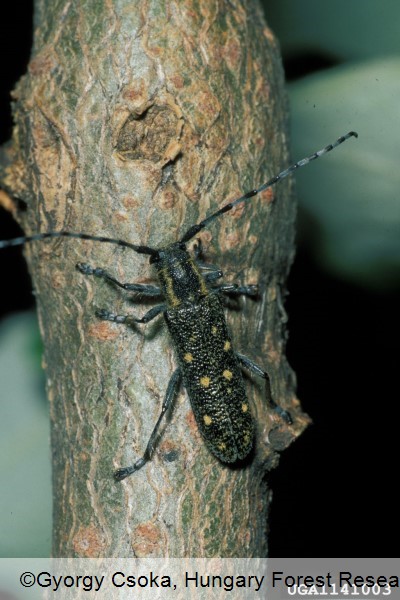
Fig. 1. A Saperda populnea adult
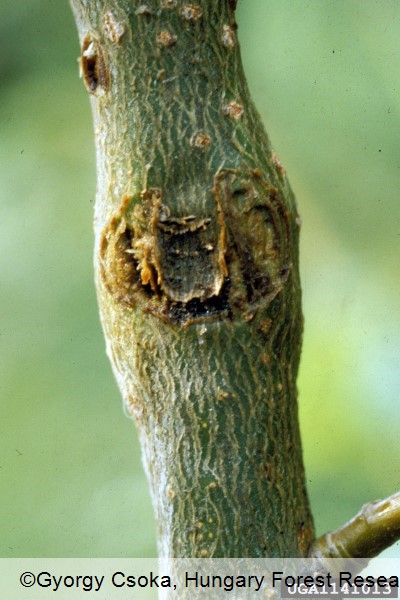
Fig. 2. A typical horseshue-shaped Saperda populnea oviposition site with a swelling
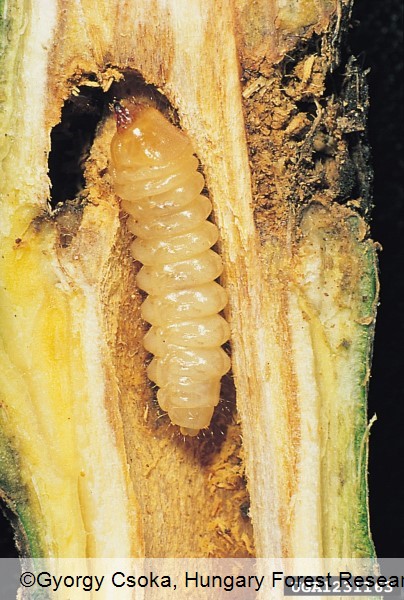
Fig. 3. A Saperda populnea larva in the tunnel
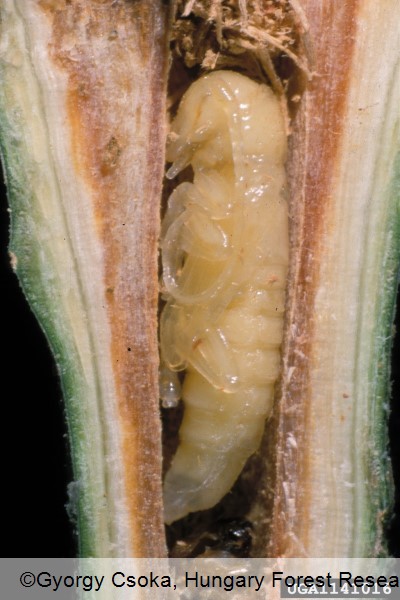
Fig. 4. A Saperda populnea puppa in the wood

Fig. 5. A Saperda populnea emergence hole

Fig. 6. Saperda carcharias adult

Fig. 7. Saperda carcharias larva in the gallery
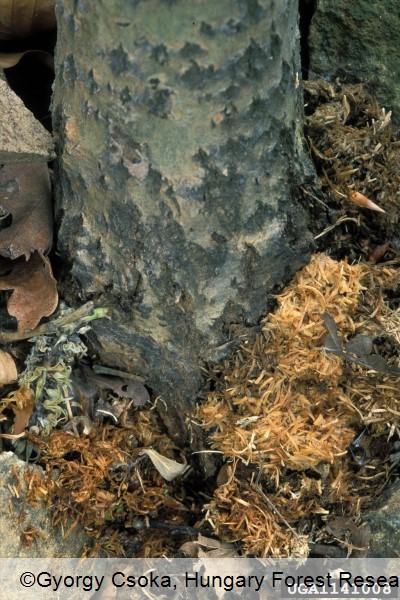
Fig. 8. Saperda carcharias wood debris and frass at the base of the tree
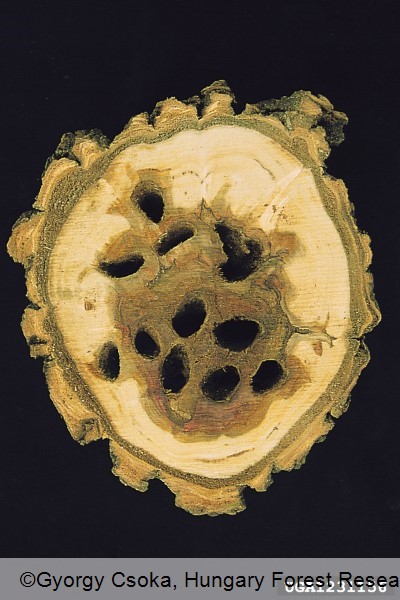
Fig. 9. Saperda carcharias damage
DETECTION PERIOD:
Saperda populnea, the small poplar borer, adults swarm in May and June, S. carcharias, the large poplar borer, adults swarm from June to August. Larvae of both species can be found in galleries in the wood of their hosts all year round.
DESCRIPTION:
S. populnea adults are 9–15 mm long beetles. The body is dark grey, somewhat marmorated. Each elytron bears a longitudinal row of orange dots, usually 5, sometimes less or the dots may be missing altogether. Larvae develop inside thin stems and branches (about 1–3 cm thick). The female chews several horseshoe-shaped oviposition sites in the bark and lays one egg in each. The affected part of the host is swelled. Larvae feed on wood tissue, by which they create galleries in the heartwood. The development lasts one to two years. Larvae pupate in spring. Adults emerge through round exit holes. S. carcharias beetles are larger (20–30 mm long) and without spots on elytra. The body is yellowish brown to yellowish grey, somewhat marmorated. Larvae develop in the wood of the lower, thicker parts of the host. The female gnaws a few vertical slits in the bark at the base of the trunk or in exposed roots and lays one egg in each. Larvae feed on wood, by which they create oval galleries in sapwood and heartwood. Larvae push some of the woody debris and frass out of galleries to the exterior. The development generally takes two years. Larvae pupate in the late spring. Adults emerge through round, approximately 1 cm wide exit holes.
HABITAT:
Natural habitats, nurseries, plantations and urban areas. Their hosts are poplars and aspens (Populus spp.), also willows (Salix spp.). Both species prefer younger trees. Adults of both species are nocturnal.
STATUS:
Both Saperda species are native in Europe and common throughout the Refocus area.
IMPACT:
Main damage is caused by larvae, which feed on wood and create tunnels in live plant tissue. The mechanical damage results in the disruption of water and nutrient transports, which leads to the loss of the plant´s vigor, defense ability and mechanical strength, and is generally followed by dieback of the host. The damaged limbs and/or stems often break. S. populnea and S. carcharias can cause extensive damage in nurseries and young poplar stands.
SIMILAR SPECIES:
Similar damage can be caused by several other xylophagous insects, both native and quarantine. As younger developmental stages of some cerambycids can be very similar, molecular techniques should be used to distinguish between different species. Generally, Saperda adults can be differentiated from other longhorn beetles based on their morphology. Insects from other groups are clearly different from both Saperda species in all developmental stages.
|